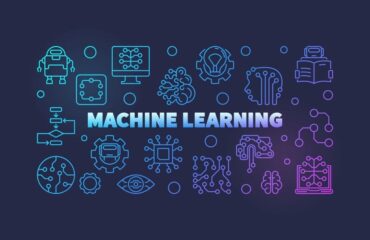
I got the inspiration to write this article from a small incident that I observed sometime back when I visited Las Vegas and was walking around trying to grab some lunch… I could hear screams and shouts from one of the small shops in the area lined up with restaurants…Well don’t get ideas because I said Las Vegas but I found this young boy on a big reclining chair which was moving at 360 degrees with a headset on his head and with hands covered with gloves which were also wired in…The teenager was in a VR (Virtual Reality) show and was totally in it… living the experience.
Being a media person, I had just witnessed first-hand the future of entertainment from one-dimension, virtual reality… which is just one of the technology trends that will change the way we are used to consuming content but also the way the media and entertainment industry functions today…
In this article I will look at two other technologies which will drastically alter Media and Entertainment industry; Artificial Intelligence and Blockchain.
Artificial intelligence is the first of the technologies which to me will alter the way the industry works…
Let’s look at how this will come about…
1.Audience understanding
Within media and entertainment, the bulk of the data work today is dedicated to audience understanding; who reads, listens to, and watches your media and entertainment content? Audience insights help in creation of anything from business strategy to marketing and content creation
Generally, representation learning, at the heart of neural networks, allows us to make use of more unstructured data, such as image and text data, more easily unlocking novel, exciting interpretations
2. Personalization
Like all industries there is a strong trend for personalization and for optimization of conversions. Personalization efforts are related to improving the experience of users and increasing their value by increasing the probability that users see multiple pages (or read multiple articles). These come typically in the form of recommendation algorithms that suggest another movie or serial to be watched based on what the user has used in the past.
This kind of personalized service is the new normal in Media and Entertainment and has become an extension of a brand’s identity and ability to drive business.
Or imagine developing a video game where the opponent actively learns from and adapts to the player’s personal style of play. Where story lines change and character responses become less predictable. And imagine creating and delivering personalized content, reducing time, cost and effort during post-production, and boosting audience engagement and conversion rates.
This is what AI will do to the Media and Entertainment industry.
3.Digital assistants to help content discovery and search
Imagine the local content that gets created and shared today…We are all bombarded with multiple videos on the various social media platforms like WhatsApp Instagram and Facebook. But today there is no option I can select from theses innumerable content what I really want to see.
What AI will eventually do is help search and watch only want we want to see.
4. Fully immersive experiences
This brings back to where I started from …VR(Virtual Reality), AR (Augmented Reality) and Mixed Reality (MR) will alter the way we have been used to consuming content and provide a fully immersive and personalized experience.
a)Pokémon Go is a perfect example of Augmented Reality in action. Players of the game use their mobile devices to track down 2D cartoon Pokémon, which appear in real-world surroundings. Their locations, frequency, and manifestations are all dictated by algorithms. The game has proven to be incredibly popular, and a notable nod to the fact that the way people consume media and entertainment content is changing.
b)Snapchat would be next best example
Behind the quirky filters lies complex machine learning algorithms. Facial recognition enables the app to detect a face, recognize facial features, and create a 3D mesh that overlays the image over specific coordinates on the face, moving with it. In other words, people can pose and take a photo of themselves with the features of a cat (ears, whiskers, tail, etc.) blended somewhat seamlessly over their own features.
c)Spider-Man Homecoming VR offers players the chance to suit up as SpiderMan, hone their web-shooting skills and sling high above New York City in pursuit of the Vulture. The VR experience will be available for free across all major VR platforms.
5.Changes across the entire spectrum by eliminating intermediaries
AI will influence all parts of the media value chain, helping content creators to be more creative, helping content editors to be more productive, and helping content consumers to find the content that matches their interests and current situation.
6. Predictive Capabilities
Media companies can also use AI to strengthen their predictive capabilities. For example, AI tools can be used to predict demand to adjust resources or to predict possible disruptions in the content supply chain (such as a content supplier failing to meet a deadline). These use cases could bring sizable savings to media companies
An AI application Azure Video Indexer, for example, builds upon media AI technologies to make it easier to extract metadata from video, including timecoded transcripts, faces, speakers, objects, actions, brands, keywords and sentiments.
Similarly, the Microsoft Azure Data Platform can capture data about user interactions with online media, building user profiles (also of anonymous users) that in turn are used to power recommendation engines, personalization, ad targeting and inform content investments…
The second technology which according to me which will bring about dramatic change in the Media and Entertainment industry is Blockchain.
Let’s understand the key areas within the Media and Entertainment industry that Block chain will affect…
1. Piracy
With a shared database which is continuously updated and reconciled that a block chain offers the biggest problem of the Media industry piracy will be a thing of the past as each transaction will be recorded and updated instantly and the said data base will be available for all members to see
2. Easier contracts and Royalty payments
Block chain will lead to smart contracts which will be used to enforce license terms and dispense payments in financial transactions. For instance, it could allow certain digital content to be published and downloaded at a defined time and price — and could then split the payout among content creators. So, when a consumer downloads, say, a song, the smart contract would automatically kick in, charging the buyer and distributing the revenue in pre-negotiated proportions to the specified stakeholders.
Ujo Music, a music software services company, used a smart contract application in what it claims was the very first launch of an artist’s album on a blockchain. Under the contract terms, consumers could buy individual songs from the album online using Ether, a digital currency; as soon as the transaction was recorded, the content owners received their money.
Monegraph, already provides an ownership registration service for digital art using the block chain technology…
3. Blockchain Time Stamping
Block chain time-stamping, allows photographers and other creators of digital artwork to register proof of copyright quickly and inexpensively so that they can protect their creations from unauthorized use on the internet. Time-stamping is a simplified version of smart property. It doesn’t track ownership changes, but it does confirm that the creator owned the asset at a specific point in time.
4. Blockchain content ledger
This records digital content information like asset metadata and social media transactions. It is a direct extension of smart property. Indeed, once a blockchain is used to store ownership information, it can also be used to hold additional information about the content. For music, this might include the songwriters, performing artists, publisher, and label. In the case of social media, it can include user posts and related activities such as “upvoting,” “downvoting,” and comments. Because the data is decentralized (not controlled by any single party) and irreversible (once entered and accepted, items can’t be changed unilaterally), it’s both highly secure.
5. Crowdfunding
A recent example of this type of project is the use of Ethereum to crowdfund the movie “Braid.”
6. Monetizing content
Monetizing content for both creators and curators. The first new business model involves creating a social network in which users can earn financial rewards (in the form of micropayments or payments of digital currency by posting their own content or curating and promoting others’ posts.
Rather than allowing the platform owners to reap all the monetary benefits, as happens today with established players like Facebook and LinkedIn, this model compensates independent content creators (bloggers, experts, hobbyists) and consumers (social network users who enjoy sharing their opinions) for their contributions. For example, Steemit, a blockchain-based social network, rewards content creators with digital currency (called “Steem”) based on the popularity of their posts.
Another block chain-based startup called Yours operates a digital platform on which authors and other content creators publish their work and charge fees in the form of Bitcoin Cash
7. A one-stop content shop by removing intermediaries
Am attaching below some of the examples of the same which are already becoming a reality
a) Singular DTV, a block chain film and television studio and distribution portal. Singular DTV caters to video and film producers by giving artists more control over their work, allowing them to launch, distribute, and monetize content without the usual intervention from studios or production houses and without being tied to exclusivity agreements with distribution channels. At the same time, it uses smart contracts to enable consumers to browse, access, and pay for content instantaneously with digital currency.
b) Creativechain targets artists, including musicians, designers, and writers, using a block chain designed to support content registration, distribution, and monetization. Artists can choose from different licensing methods, ranging from free distribution to paid limited editions. This flexibility lets them select the method that is best suited to distributing their work. Under this scenario, there is no need for third-party distributors to bring the content to consumers and collect revenue; the platform handles that directly.
c) Musicoin, focuses exclusively on the music industry and encourages independent artists to register and publish their work on its own block chain-based platform. It uses a standard pay-per-play smart contract to reward musicians based on preset fees each time a song gets played. In addition, consumers are encouraged to reward their favorite artists with tips. Besides distributors, other players typically involved in music rights management (including what are known as “performing rights organizations,” which essentially collect royalties for music performance on behalf of rights owners) are not needed on this platform since it connects music consumers directly to artists or labels and automatically customizes revenue distribution.
8. Digital Ad fraud shrinkage:
The Digital Media industry is suffering immensely because of ad frauds, bot clicks and a dozen of misinterpretations. Companies most of the times are unable to evaluate if the Ads they place and are paying for because sometimes click on Ads are created by the bots. This actually leads to a vast amount of money being wasted as Ads could not be monitored as it should have been. Block chain Advertising will prove to be a solution as the entire Block chain is encrypted and transparent and hence guarantee that the Ad Metrics are verifiable.
One example of this facility is Metax which utilizes Blockchain against Ad frauds. On the advertiser’s end, it provides a trustworthy solution for tracking and verifying all ad impressions. Also, they offer publishers the control and ability to retain the full value of their content to attract premium ad spent.
9. Targeted Advertising
The concept of targeted advertising along with decentralized engine will very likely turn out to be an effective tool for both consumers and small and large companies alike. In the past, the Advertisers used to gain information about their customers from various disperse sources.
With Block chain advertisers will have the capability to build a customer profile from the data customer is willing to share in a single scoop. This actually allows to market to customer needs and spend advertising budget only on customers who are most likely to buy your product.
To conclude, as customers viewing habits change people consuming content on the go whether it’s on their local train, on a flight or even while walking and as we all get used to multiple devices changing the way we view content and the creation of content becomes much more easier and as people shift to watching to videos more than reading which is the rapidly emerging trend…
The adoption of Artificial Intelligence and Block chain in the Media and Entertainment industry will accelerate these changes and alter the way not only we consume content but also the way Media and entertainment companies work…
Watch this space for more on this topic… as the industry evolves and reinvents itself…



